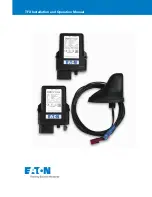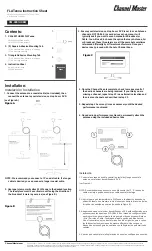
Be sure to read these warning and caution notices carefully to avoid injury.
Risk of Electric Shock
Potentially lethal voltages are present within the antenna and the ICM when the system is connected to
AC power. To avoid electric shock, do not enter the antennas hatch or remove the radome while the
system is powered on. Also do not open the ICM chassis enclosure for any reason; there are no
user-serviceable parts inside.
Risk of Electric Shock
If any component of the TracPhone system becomes damaged and/or no longer functions normally,
disconnect it from vessel power, secure it from unintended operation, and contact KVH Technical
Support (see Technical Support on page 1). All repairs or modifications must be performed by a
trained, KVH-certified technician. If you are a KVH-certified technician, you still must contact KVH
Technical Support prior to conducting any repairs or modifications to the equipment.
Risk of Explosion
Do not operate the ICM (or any other electrical device) in an environment where flammable gases,
vapors, or dusts are present. In addition, do not operate the ICM in an environment with a temperature
outside its 5º F to 131º F (-15º C to 55º C) temperature range.
Risk of Electric Shock
Failure to ground the TracPhone system properly to ships ground will cause an unsafe floating ground
condition, risking potentially lethal electric shock. See Connect Power on page 25 for details on the
proper grounding of the equipment.
RF Radiation Hazard
The antenna transmits up to 22 watts of radio frequency (RF) energy that is potentially harmful.
Whenever the system is powered on, make sure everyone stays more than 42 feet (13 m) away from the
antenna. The minimum safe distance increases to 101 feet (31 m) if a person is more than 6.5 feet (2 m)
above the plane of the antennas base. No hazard exists directly below the antenna.
Crushing Hazard
The antenna contains moving parts that can cause injury. Do not enter the hatch while the system is
connected to AC power.






































